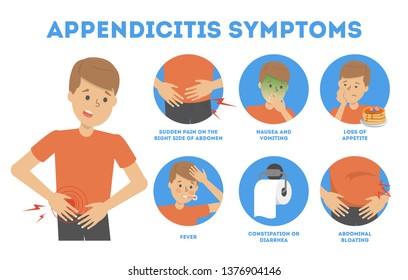
The first symptoms of appendicitis are usually pain and fever around the abdomen. However, with appendicitis, usually the pain goes down from one side to the other and can eventually get worse to the right side of your abdomen.
If your child has abdominal pain, look for the following signs of appendicitis: abdominal or lower right pain (or both), severe pain or tenderness in the waist, and / or pain or tenderness in the pelvic area. Also, the pain can start and go away after a couple of hours, but can actually last from a few days to weeks. If your child does have a stomach ache, check for nausea.
Usually, the pain and swelling in the waist area is caused by food poisoning. But sometimes this pain can be caused by something else. For example, a ruptured colon can cause abdominal pain that lasts for several days. And pelvic pain can also be caused by a kidney infection, ovarian cyst, or some type of cancer.
If your child is experiencing pain or tenderness in the abdomen, you need to make sure that the pain is not just caused by accidentally sticking your finger in his lower abdomen and causing him to bleed. You also need to make sure the pain is not caused by something serious, such as an infection or kidney stones.
If you notice discolored spots around their belly, you might want to check their belly muscles for tenderness. If your abdominal muscles hurt, it means that the pain is caused by muscle spasms. These muscle spasms can cause pain and inflammation, so areas of discolored skin should be checked immediately by a doctor. If the spots are yellow or red, they are probably caused by inflammation, and anti-inflammatory drugs or even pain relievers are the best treatments. if your child has any type of stomach cancer or tumor.
The next time that you see your child with abdominal pain and tenderness, do not push them and do not let them lie down because you may end up moving the tissue in their abdomen instead of treating the actual pain. So instead of pushing them down, try to push their legs against the floor and try to pull the tissue from the abdominal area as well.
Finally, if your child's abdominal pain does not go away in a few hours, you should get your doctor to take a swab sample of their blood for a test called a CT scan. In this test, it will help the doctors know exactly where the pain is coming from so he can provide you with the proper treatment. Also, if your doctor diagnoses it correctly, you can expect that your child will be able to receive antibiotics as soon as possible.
The above are some of the signs of pain in the abdomen and abdominal pain in children can be a little bit hard to treat
However, if you are able to identify the problem at the beginning, your chances of success are greatly increased.
It is important that you understand your child and their body fully before you decide on a treatment option. It is much better to consult your doctor first than to end up getting treatments for the wrong things. Some of the signs of pain in the abdomen include the following:
Do not worry too much about the pain if you see a few signs. Sometimes, the pain will subside after a day or two. It is better to be safe than sorry. There is a possibility that the pain will resolve in one or two days.
If your child is suffering from stomach acid reflux, it is important that you do not ignore the symptoms because they can lead to serious conditions such as peritonitis and other complications. If left unchecked, this can cause permanent damage and even death.